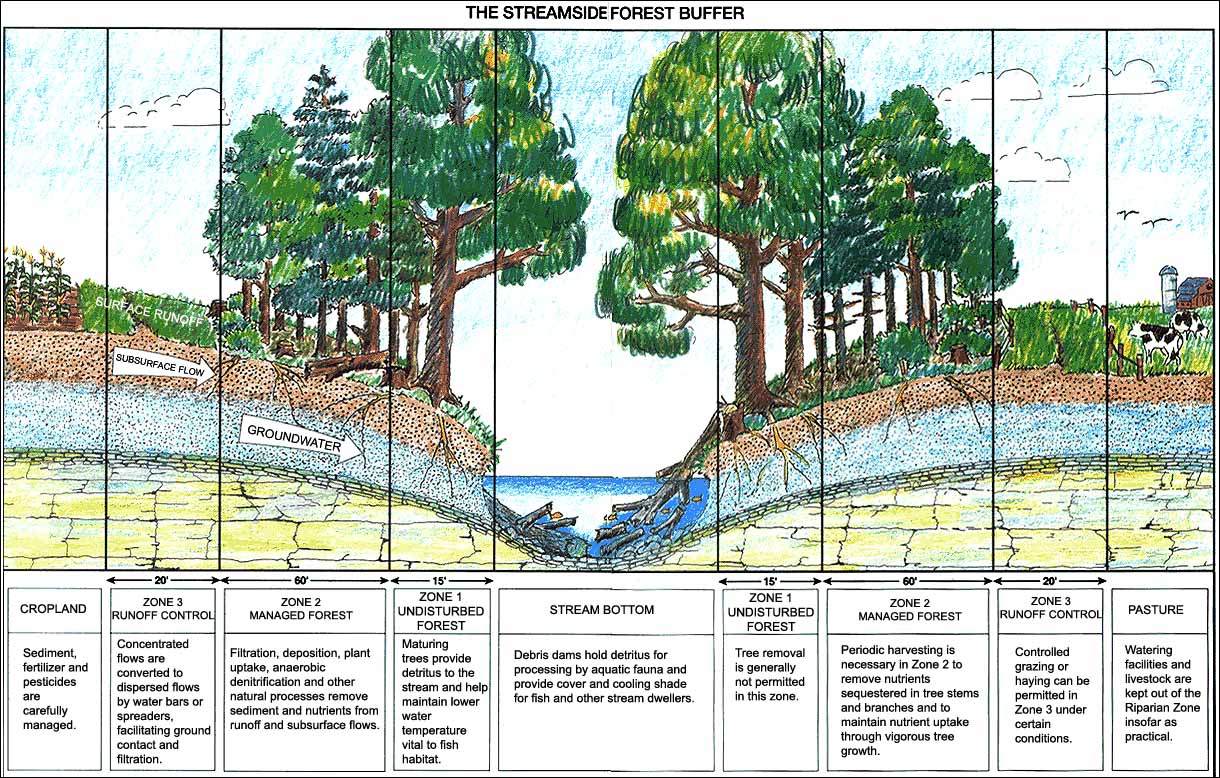

 |
Preventing
Erosion Problems & Stream Bank Stabilization |
 |
 Preserve native streamside vegetation.
Preserve native streamside vegetation. But beware! Invasive
non-native species can choke out native plants.
But beware! Invasive
non-native species can choke out native plants. Avoid removing natural
debris.
Avoid removing natural
debris. Check for erosion
regularly and correct problems promptly.
Check for erosion
regularly and correct problems promptly.
 The
best erosion control is
proper stream care. Neighbors must cooperate in their efforts and share
responsibility for maintaining a healthy stream.
The
best erosion control is
proper stream care. Neighbors must cooperate in their efforts and share
responsibility for maintaining a healthy stream. If
the native riparian
vegetation has been depleted or removed, but severe bank erosion has
not yet
occurred, you may be able to re-establish or add to the remaining
vegetation on
your own. Find out what types of native vegetation to use on your
particular
site and how to plant and care for them.
If
the native riparian
vegetation has been depleted or removed, but severe bank erosion has
not yet
occurred, you may be able to re-establish or add to the remaining
vegetation on
your own. Find out what types of native vegetation to use on your
particular
site and how to plant and care for them. Modify
steep banks to
shallow or moderate slopes and revegetate with native riparian plants.
(Live
cuttings of willow driven into the bank or bundles of live cuttings
secured to
the banks can be effective).
Modify
steep banks to
shallow or moderate slopes and revegetate with native riparian plants.
(Live
cuttings of willow driven into the bank or bundles of live cuttings
secured to
the banks can be effective). Create
terraces and plant
with native species.
Create
terraces and plant
with native species. Retrofit
existing bank
stabilization with planting collars.
Retrofit
existing bank
stabilization with planting collars. Erosion
control need not be costly.
Erosion
control need not be costly.
 Consider
low-tech, lower cost, stream
friendly alternatives first.
Consider
low-tech, lower cost, stream
friendly alternatives first.
 Virtually
any activity in a wetland requires
a permit. Be sure to seek
professional advice before taking action.
Virtually
any activity in a wetland requires
a permit. Be sure to seek
professional advice before taking action. 